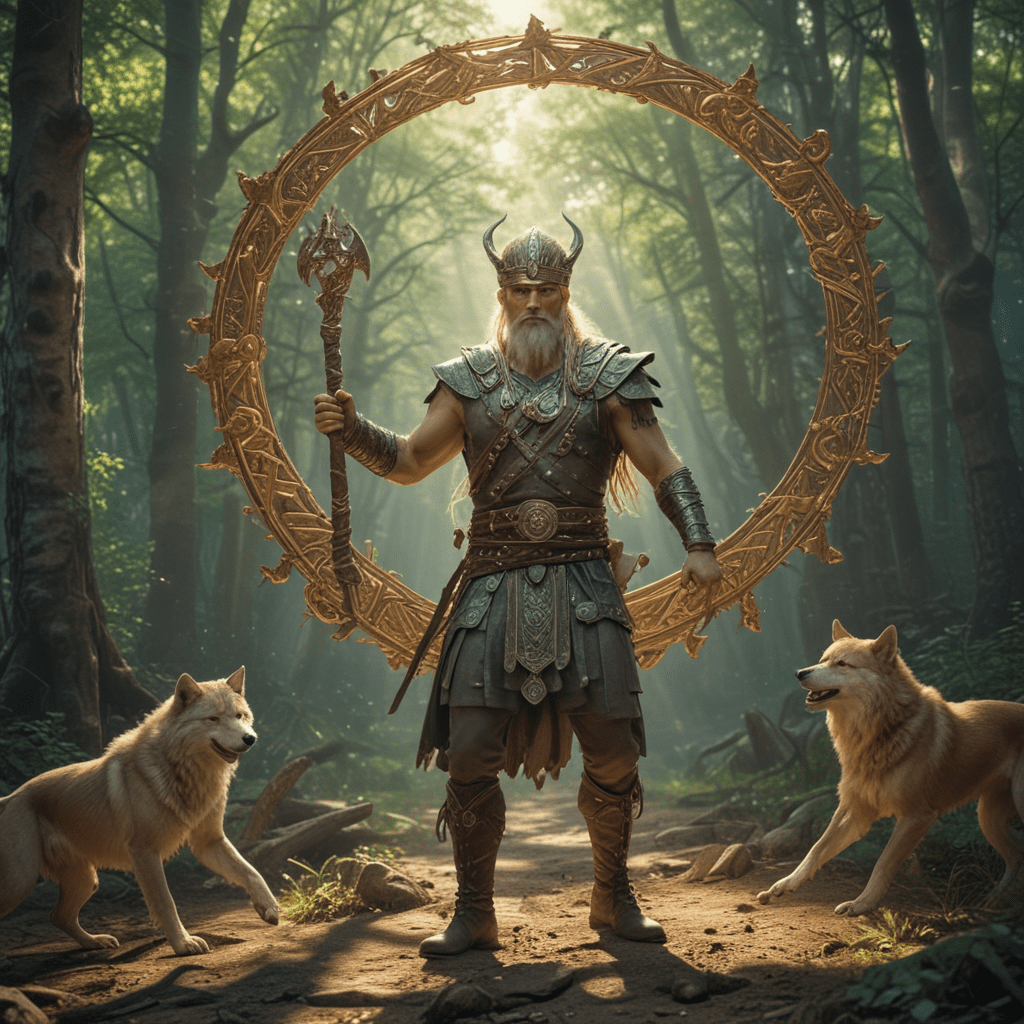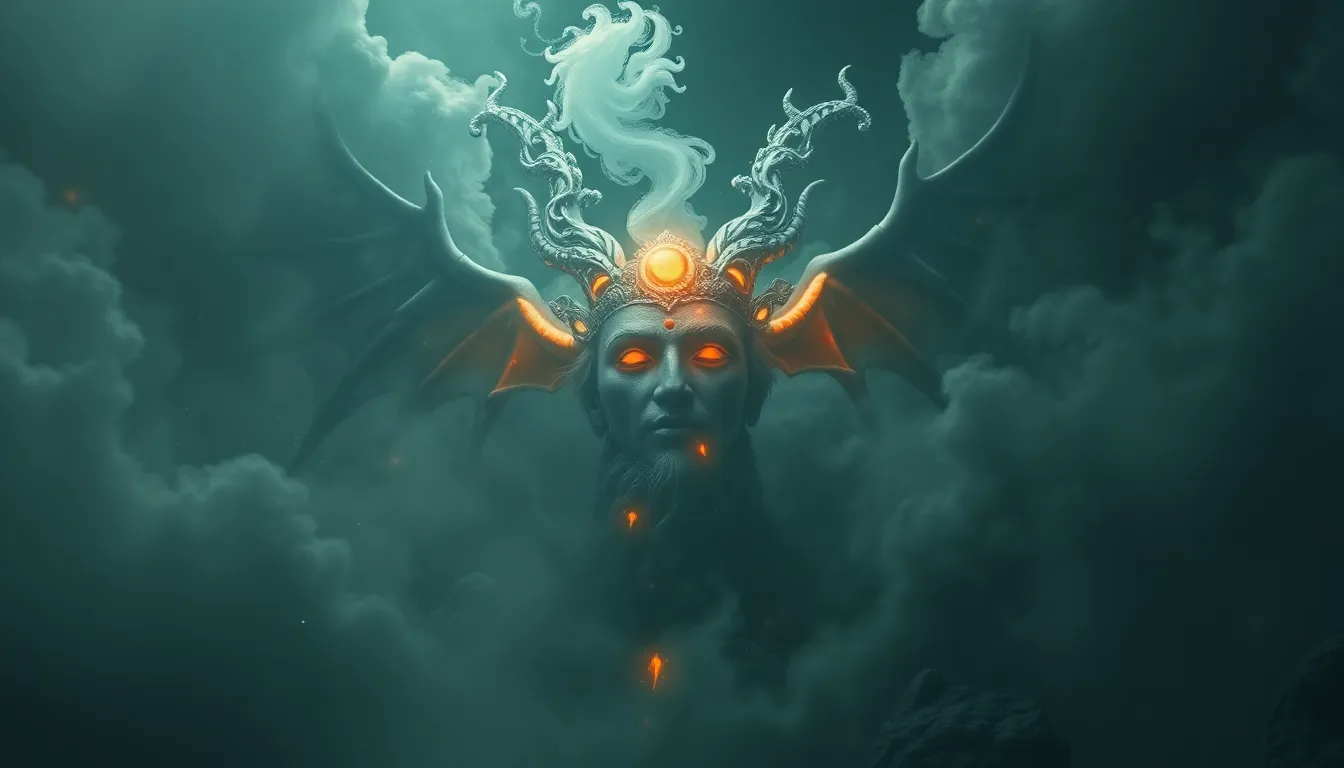1. Introduction to Slavic Mythology
Slavic mythology, a rich tapestry of beliefs, stories, and traditions, has captivated imaginations for centuries. Originating from the ancient Slavic people who inhabited Eastern and Central Europe, this mythology is a treasure trove of captivating tales, where gods, spirits, and mythical creatures intertwine. At the heart of Slavic mythology lies the concept of duality, the interplay of light and darkness, good and evil. This article delves into the fascinating world of Slavic mythology, exploring its tales of trickery and deception, uncovering the cunning, shapeshifting, and enigmatic characters that populate this captivating realm.
2. The Cunning Veles: Trickster God of the Underworld
Among the pantheon of Slavic deities, Veles stands as a prominent figure, embodying both trickery and wisdom. As the god of the underworld, cattle, and merchants, Veles is known for his cunning and mischievous nature. Depicted as a shape-shifting trickster, he often assumes animal forms, particularly that of a bear or wolf. Veles's deceptions serve various purposes, from protecting his followers to outsmarting his adversaries. Tales of his clever schemes and cunning strategies abound, showcasing his ability to manipulate and outwit even the most formidable foes.
3. The Deceptive Kikimora: Slavic House Spirit
Kikimora, a mischievous female house spirit, plays a significant role in Slavic folklore. Residing in homes and barns, she is known for her domestic trickery. Kikimora weaves chaos through her deceptive actions, hiding objects, tangling threads, and causing general mischief. Her deceptive nature often stems from a desire for attention or a longing for companionship. Depictions of Kikimora vary, with some portraying her as a small, agile creature, while others describe her as a tall, emaciated woman. Regardless of her appearance, Kikimora's cunning and ability to cause domestic disarray make her a memorable character in Slavic tales of trickery.
4. The Shapeshifting Leshy: Forest Guardian
Leshy, the enigmatic guardian of the forest, is a central figure in Slavic mythology. Known for his shapeshifting abilities, he can assume the form of various animals, trees, or even humanoids. Leshy's trickery often manifests in leading travelers astray, confusing their paths, and creating illusions. Despite his mischievous nature, Leshy is also seen as a protector of the forest, ensuring its balance and harmony. Tales of his cunning and the challenges he poses to those who venture into his domain add depth to the rich tapestry of Slavic mythology.
5. The Sly Rusalka: Female Water Spirit
Rusalka, a captivating female water spirit, embodies the deceptive allure of Slavic mythology. Depicted as beautiful and enchanting, she often lures unsuspecting victims to their doom. Rusalka's watery domain becomes a treacherous realm where she drowns those who succumb to her deceptive charm. Tales of her cunning and the dangers she poses to those who venture near water serve as a cautionary reminder of the hidden dangers that lurk beneath the surface.
6. The Trickster Baba Yaga: Wise Old Witch
Baba Yaga, an iconic figure in Slavic folklore, is a complex and enigmatic character. Depicted as a wise old witch who resides in a house that stands on chicken legs, Baba Yaga is known for her cunning and trickery. She often tests those who seek her aid, challenging their wit and resolve through riddles and tasks. Tales of her magical powers, shape-shifting abilities, and mysterious nature add depth to the rich tapestry of Slavic mythology.
7. The Enchanting Firebird: Symbol of Sun and Rebirth
The Firebird, a radiant creature of Slavic mythology, embodies the sun's power and the cycle of rebirth. Its captivating beauty and mesmerizing song can enchant all who behold it. Tales of heroes embarking on quests to capture the Firebird are prevalent in Slavic lore, highlighting its symbolic significance and the challenges faced in pursuing elusive dreams.
8. The Cunning Dragon: Guardian of Treasures
The Dragon, a formidable creature in Slavic mythology, is often depicted as a guardian of treasures and hidden knowledge. Its cunning and strength make it a formidable adversary, testing the courage and determination of those who seek its riches. Tales of brave heroes overcoming the Dragon's challenges add excitement and adventure to the Slavic mythological landscape.
9. The Deceptive Chernobog: Lord of Darkness
Chernobog, the Slavic god of darkness and evil, represents the forces of chaos and destruction. His deceptive nature manifests in tempting mortals with power and forbidden knowledge, leading them astray from the path of light. Tales of Chernobog's cunning and the dangers of succumbing to his influence serve as warnings against the allure of darkness.
10. The Power of Slavic Tricksters: Lessons and Warnings
The tricksters and deceivers of Slavic mythology play a crucial role in shaping the moral compass of the Slavic people. Through their cunning and deceptive actions, they test the boundaries of good and evil, highlighting the consequences of trickery and the importance of wisdom and discernment. Their tales serve as cautionary reminders of the dangers of deceit and the power of cunning, leaving a lasting impact on the Slavic cultural psyche.
FAQs
Q: What are the common characteristics of Slavic tricksters?
A: Slavic tricksters are often depicted as cunning, shape-shifting, and enigmatic figures who test the wit and resolve of those they encounter. They embody the duality of Slavic mythology, representing both the light and dark aspects of human nature.
Q: What is the significance of the Firebird in Slavic mythology?
A: The Firebird symbolizes the sun's power, rebirth, and elusive dreams. Its captivating beauty and mesmerizing song represent the allure of the unknown and the challenges faced in pursuing one's aspirations.
Q: Why are dragons considered cunning in Slavic mythology?
A: Dragons in Slavic mythology are often depicted as guardians of treasures and hidden knowledge. Their cunning stems from their ability to deceive and outsmart those who seek their riches, testing the courage and determination of heroes.



